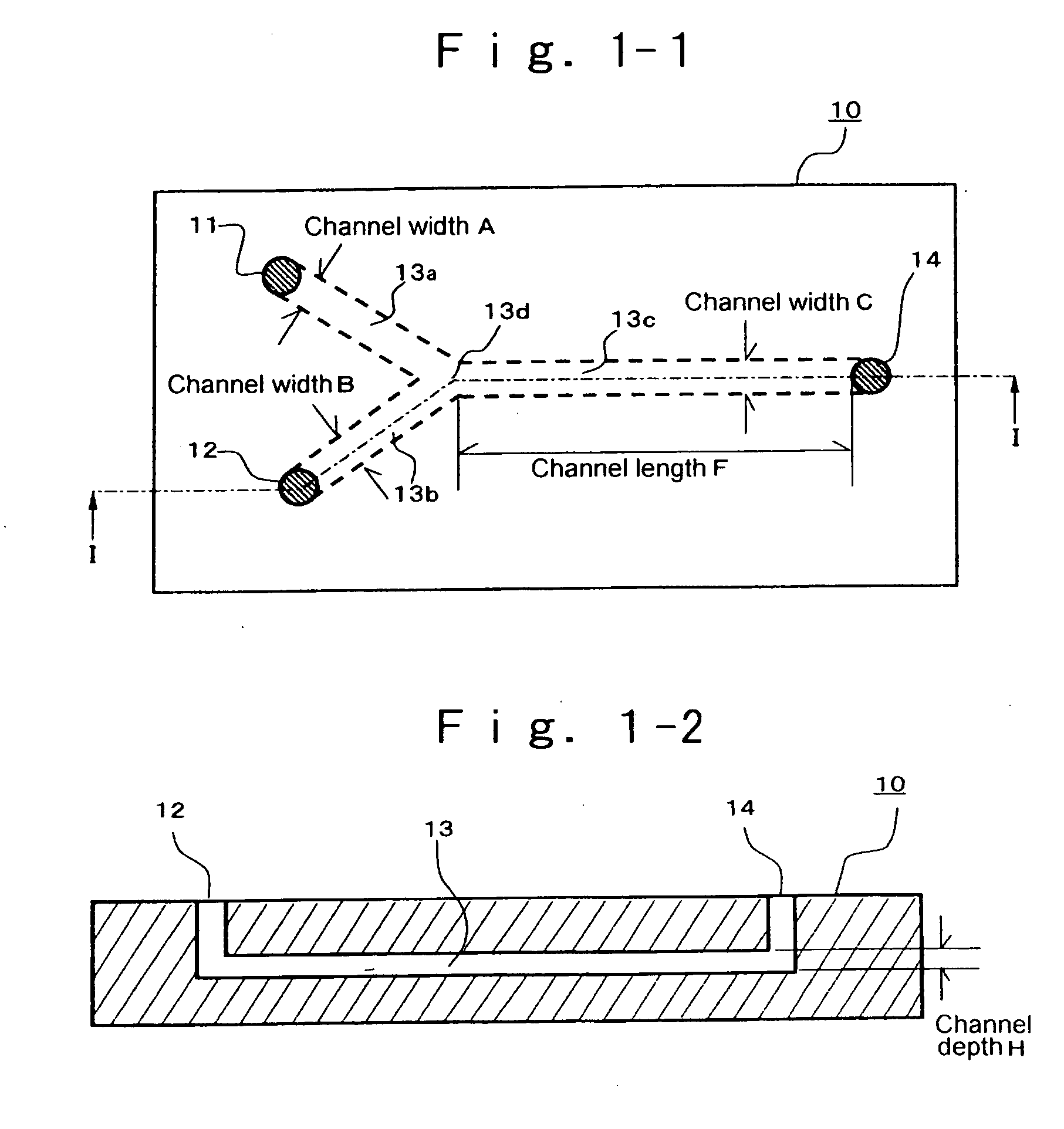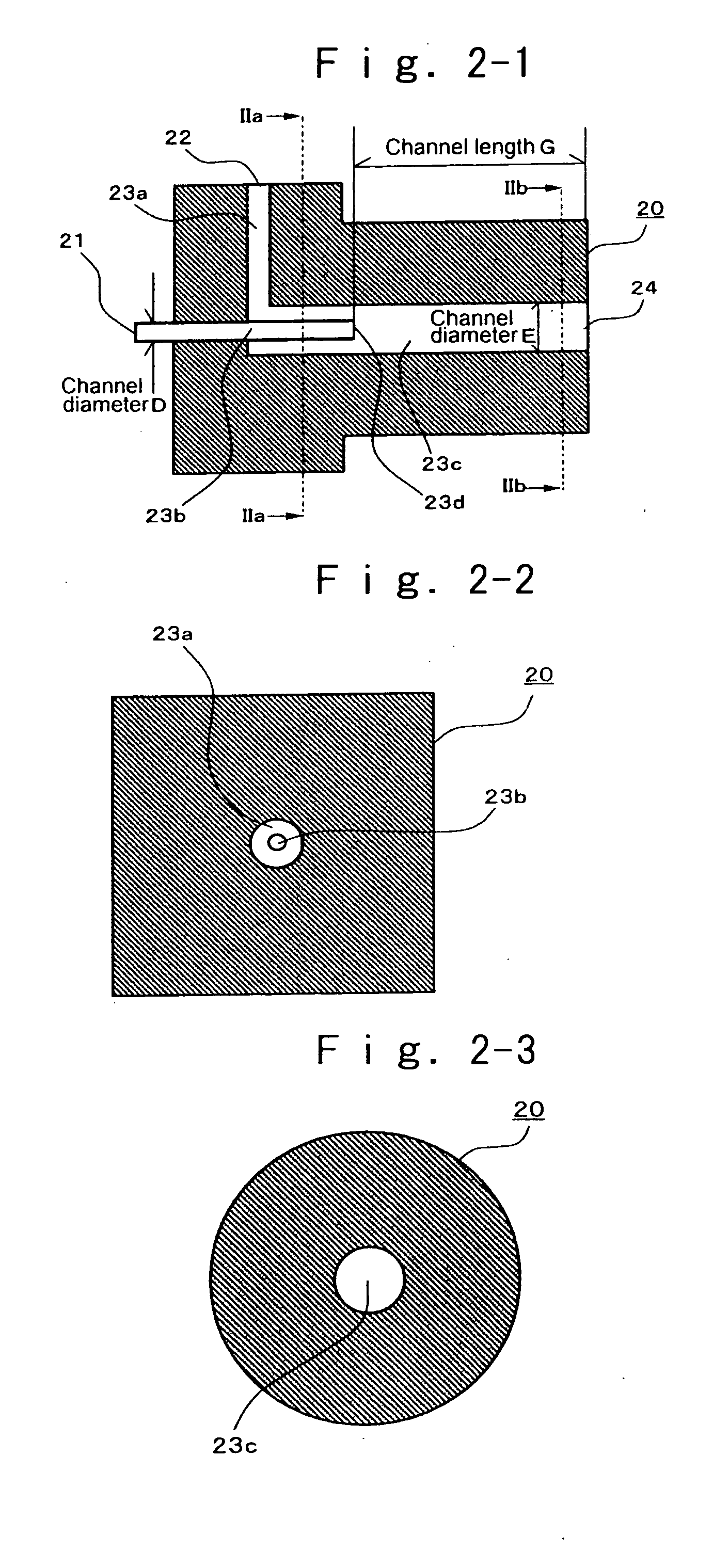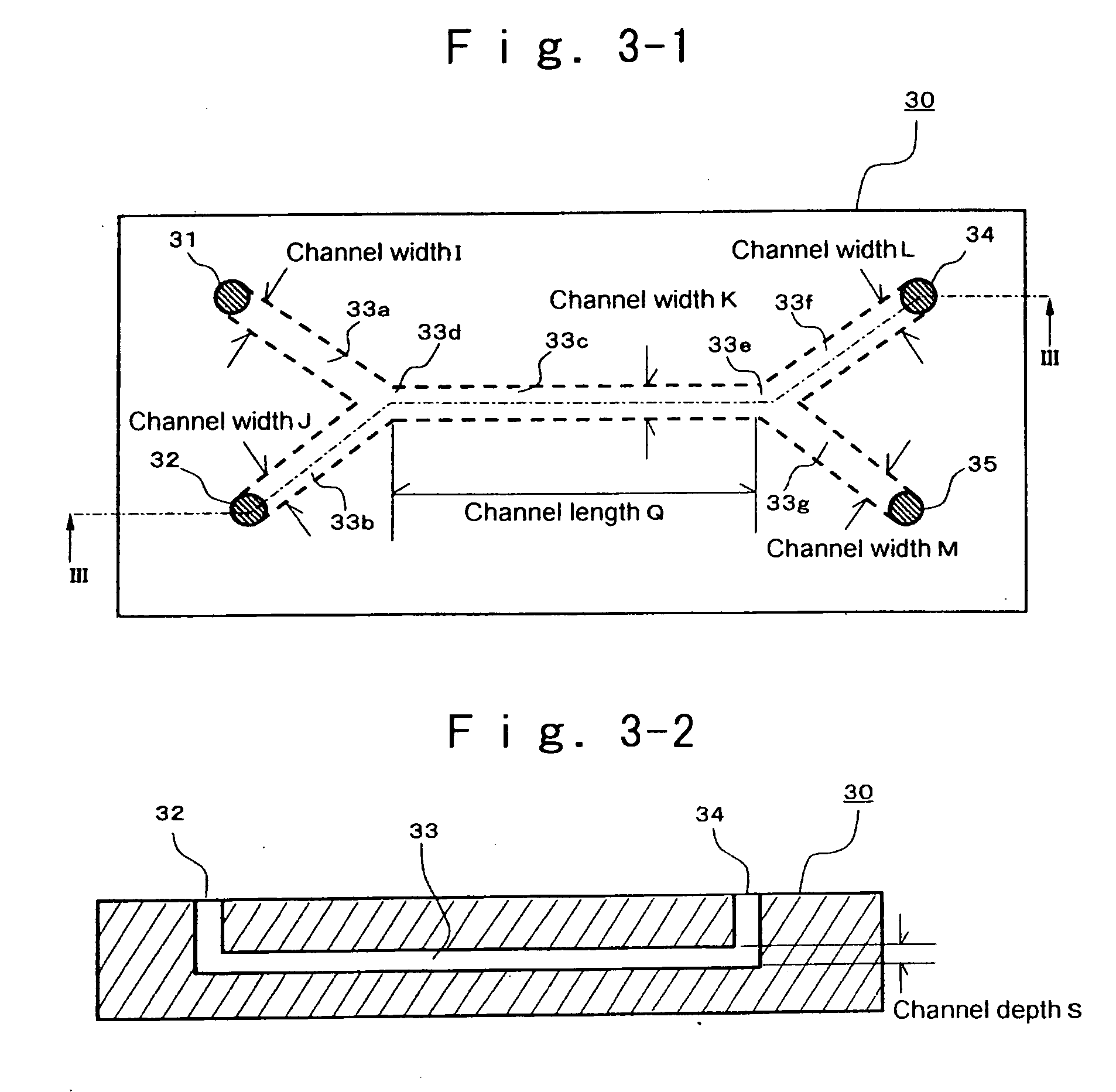Organic pigment fine-particle, and method of producing the same
a technology of organic pigments and fine particles, which is applied in the direction of azo dye coupling reaction, chemistry apparatus and processes, transportation and packaging, etc., can solve the problems of poor close bindness of pigments in images, water resistance and light resistance, and pigments that cannot be easily formed uniformly
- Summary
- Abstract
- Description
- Claims
- Application Information
AI Technical Summary
Benefits of technology
Problems solved by technology
Method used
Image
Examples
example 1
[0176] At room temperature, 1.5 g of 2,9-dimethylquinacridone was dissolved into 13.5 g of dimethylsulfoxide, 2.68 mL of a 5 mol / L aqueous sodium hydroxide solution, and 0.75 g of a dispersing agent, polyvinyl pyrrolidone (K30 (trade name), manufactured by Wako Pure Chemicals Industries, Ltd.). The resultant solution is designated to IA solution. The pH of the IA solution was over a measurable limit (pH: 14), and was unable to be measured. Separately, 0.75 g of a dispersing agent, sodium N-oleoyl-N-methyltaurine was mixed with 90 mL of distilled water. The resultant solution is designated to as IIA solution. The pH of the IIA solution was 7.70. These solutions each were passed through a micro-filter having pores of 0.45 μm diameter (manufactured by Fuji Photo Film Co., Ltd.), to remove impurities such as dust. Then, using a reactor, as illustrated in FIG. 1-1, reaction was conducted according to the following procedure. Two Teflon (registered trademark) tubes with length 50 cm and e...
example 2
[0178] At room temperature, 0.15 g of 2,9-dimethylquinacridone was dissolved into 13.35 mL of dimethylsulfoxide, 1.65 mL of a 0.8 mol / L aqueous potassium hydroxide solution, and 0.75 g of polyvinyl pyrrolidone (K30 (trade name), manufactured by Wako Pure Chemicals Industries, Ltd.). The resultant solution is designated to IB solution. The pH of the IB solution was over a measurable limit, and was unable to be measured. This IB solution and the IIA solution prepared in Example 1 were separately passed through a micro-filter having pores of 0.45 μm diameter (manufactured by Fuji Photo Film Co., Ltd.), to remove impurities such as dust, thereby yielding transparent solutions, respectively. Then, using a reactor described below, reaction was conducted according to the following procedure. Two Teflon (registered trademark) tubes with length 50 cm and equivalent diameter 1 mm were connected to two inlets of a Teflon (registered trademark) Y-shaped connector with equivalent diameter 500 μm...
example 3
[0182] At room temperature, 0.01 g of 2,9-dimethylquinacridone was dissolved into 10.0 mL of dimethylsulfoxide, 0.11 mL of a 0.8N aqueous potassium hydroxide solution, and 0.05 g of polyvinyl pyrrolidone (K30, manufactured by Wako Pure Chemicals Industries, Ltd.). The resultant solution is designated to IC solution. The pH of the IC solution was over a measurable limit, and was unable to be measured. The IC solution was passed through a micro-filter having pores of 0.45 μm diameter (manufactured by Fuji Photo Film Co., Ltd.), to remove impurities such as dust, thereby yielding a transparent solution. In the reactor, as illustrated in FIG. 1-1, which had a Y-shaped channel made of glass and had a channel width A of 100 μm, a channel width B of 100 μm, a channel width C of 100 μm, a channel length F of 12 cm, and a channel depth H of 40 μm, two Teflon (registered trademark) tubes were connected to the introducing port 11 and the introducing port 12, each through a connector. Then, two...
PUM
| Property | Measurement | Unit |
|---|---|---|
| equivalent diameter | aaaaa | aaaaa |
| equivalent diameter | aaaaa | aaaaa |
| diameter | aaaaa | aaaaa |
Abstract
Description
Claims
Application Information
 Login to View More
Login to View More - R&D
- Intellectual Property
- Life Sciences
- Materials
- Tech Scout
- Unparalleled Data Quality
- Higher Quality Content
- 60% Fewer Hallucinations
Browse by: Latest US Patents, China's latest patents, Technical Efficacy Thesaurus, Application Domain, Technology Topic, Popular Technical Reports.
© 2025 PatSnap. All rights reserved.Legal|Privacy policy|Modern Slavery Act Transparency Statement|Sitemap|About US| Contact US: help@patsnap.com



